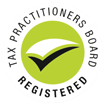Did your tax refund go down this year? If so, you are not alone, in fact it’s very common for tax refunds to fluctuate year on year. It’s really disappointing to not receive money you’re expecting and it can leave you in hot water if you were relying on that cash to pay for something important. So why does it happen and what can you do to avoid it happening again?
What makes a tax refund go down?
There are various reasons why your tax refund estimate is lower than you think it should be. There are different reasons why your tax refund is lower than the original estimate you were given, prior to lodgment with the ATO. Some you can avoid, others you can’t, so let’s look at the most common reasons a tax refund goes down:

Double claiming the Tax-Free Threshold
Very often, when a tax refund is lower than you think it should be, it’s due to claiming the tax-free threshold twice. The tax-free threshold is the first $18,200 you earn in a year.
How does this make your tax refund lower?
If you changed jobs this year or took on a second job, you received a Tax File Number Declaration form to fill in from your new employer. On that form there is a question that asks, “Do you want to claim the tax-free threshold from this payer?” Well of course you do, right? If there’s a tax-free threshold, then you want to claim that, surely. Actually, no you don’t, not if you already have an employer.
Unfortunately, if you’ve checked that box on a second Tax File Number Declaration form, there’s no way your second employer will know. They will calculate the amount of tax you pay, on the understanding that you can claim that tax-free threshold.
At tax time, the ATO will rectify that by reducing your tax refund by the amount of tax you should have paid on the second $18,200 you claimed the tax-free threshold on.
How to avoid:
It’s a very easy mistake to make but now you know about it, next time you’re changing jobs or taking on extra work, make sure you don’t double dip!
Make taxes easy with Etax Local
No forms, no appointments. Secure client portal, available 24/7.
Call 1300 174 689 and chat to one of our representatives today, or fill in our simple online form
and we’ll get in touch.

Employer didn’t calculate the right amount of tax
Unfortunately, this does happen. Employers simply don’t accurately calculate the amount of tax their employees need to pay. This can lead to a lower tax refund – and sometimes even a tax debt to pay.
How to avoid:
If this does happen to you. Talk to your accounts department so they are aware that they’ve got something wrong. You can also ask them to take out a little extra each week, so you’re covered if it happens again.

Medicare Levy Surcharge
If you didn’t have private health cover but your income tipped over the *$97,001 income threshold (*$194,001 as a family) in the 2024-25 financial year, between 1% and 1.5% of your income went to the Medicare Levy Surcharge.
How to avoid:
The only way to avoid the Medicare Levy Surcharge, above this income threshold is to buy Private Health Insurance. You’ll still be out of pocket but at least you will get some benefit – and you won’t see your tax refund go down!
*NOTE: For the 2025-26 financial year, this income threshold rises to $101,001 for singles and $202,001 for families.

Did your side gig cause your tax refund to go down?
Did you do a few side gigs like Airtasker or Uber on top of your usual job, this the year? If so, did you include that income on your tax return? The ATO takes ALL the income you earned throughout the year into account, when assessing the amount of tax you need to pay. If you miss anything, the ATO’s data matching is likely to pick it up! They then add this to your assessable income, which results in a lower tax refund or a possible tax bill.
How to avoid:
Keep good records of all your income when you pick up any extra work. Remember, contract or freelance income is not taxed before you receive it. It’s important to keep a little of what you earn aside to cover any tax you may owe on the extra cash you earned. If side gigs or freelance work is becoming regular for you, talk to and Etax Local Accountant. You’ll probably need some business registrations.

Is your tax refund lower than your estimate?
If you received a lower tax refund than the estimate you were given before it was lodged, it’s likely due to one of the following:
1. A Government agency debt
If you have a debt with another Government agency, such as Centrelink or the Family Assistance Office, the ATO will often pay that debt, prior to releasing any of your refund to you.
2. ATO debt
If you have an ATO debt and you have not set up a payment plan, they will probably recoup all or some of it before paying any tax refund to you.
3. Forgetting something?
If you forget to include something on your tax return, like bank interest, or income from an investment, the ATO will add it. This is very likely to make your actual tax refund lower than your estimate.
How to avoid:
Sometimes there’s nothing you can do about debts. They may be due to overpayments you’re not aware of, or an honest oversight when doing your return. Communications from government agencies are often confusing, so it’s easy to miss changes too. Our best advice is to use a tax agent, keep good records and read all correspondence from government agencies very carefully. If you’re not sure what something means, or you’re not sure whether to declare something on your tax return, don’t be afraid to ask.
Conclusion
As you have just read, there are many reasons for your tax refund to be lower than you expected. It’s a very common occurrence and not always something you can protect yourself from. However, now you know the most common reasons why a tax return can go down, hopefully you can limit the chances of it happening to you again.
 Tax Agent
Tax Agent



